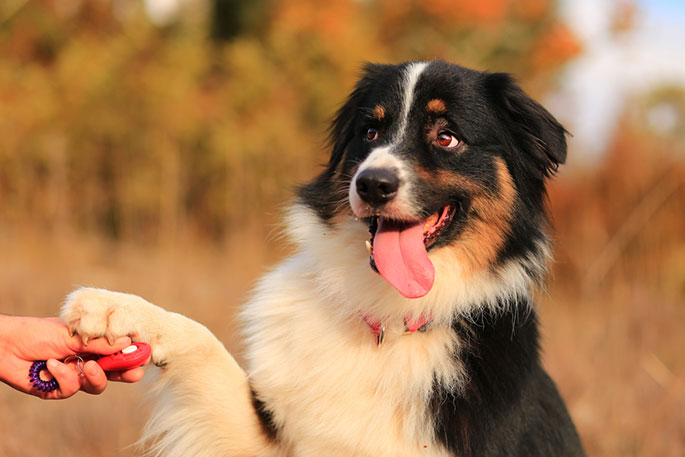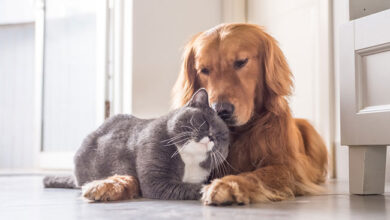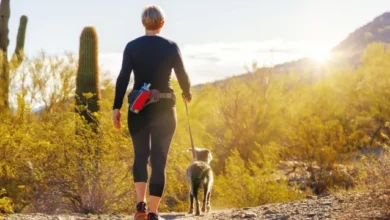
Dogs more often escape the yards when they find something more interesting beyond the fence. Things like another animal to play with or open parks appear more enticing to them than a confined yard.
A Containment System is meant to keep the dogs from bolting the yards. Dogs who escape, mostly face tragic consequences like an accident or getting lost. Therefore, in order to avoid any unfortunate incident with your dog, a proper containment method is required.
How Does a Containment System Work for Your Dog?
Typically the system needs you to install a fence underground and a transmitter is fitted in your dog’s collar. As your dog goes near the fencing area the collar beeps. This is a warning to the dog to step back. If your dog will proceed to approach the fence he will get a minor shock.
Therefore, before the dog attempts to approach the wireless fencing system it is mandatory to give him certain training. It will take a minimum of two weeks of training to keep the dog inside a containment system.
Fun, Firm, and Frequent Training
Once you have installed the containment system it is time to start training your dog. Remember that the training should be Fun, Firm, and Frequent. Let us see how.
Fun: Enjoy and play with your dog in the yard during the training period. Use balls or other toys to keep him entertained. This will make him want more playful sessions of training. If the training will be boring and strict he will not cooperate with you furthermore.
Firm: Anna from Doglovesbest says, “It is essential to be a little firm with your dog at times. Firmly teach your dog commands like Run, Go, Stop, Sit, Follow, and No. These commands will help you a lot during the training sessions.” However, you should never scold or beat the dog if he does not follow or understand your instructions.
Frequent: The training should be frequent and regular. Manage and give some time to train your dog daily. It should start with 10-15 minutes initially, increasing to 1 hour or more by the end of the second week. Training will take at least 20-30 days. However, inconsistency can lead your dog to escape anytime due to a lack of training.
Train Your Dog to Stay Within the Containment System
Start training for 15 minutes, in the beginning, gradually increase the time up to 1 hour. Hold 2-3 sessions in a day; train him every time you take him to the play area. It will take at least 20 days to a month to finish the training. Consistency is a must to train your dog to stay in the containment system.
Day 1 – Day 5: Boundary Recognition Training
First of all leash your dog before taking him to the play area. Make your dog wear the collar that has the transmitter fixed.
- In the beginning, you have to make the dog aware of the boundary flags. The flags are to be set exactly above the original underground fencing.
- Engage your dog in playful activities at the time of training. Include plenty of toys in the yard. Make the experience enjoyable and involve other family members too.
- Play with your dog casually but keep an eye on him when he goes towards the boundary.
- Every time you hear the beep sound, pull your dog back gently with the leash.
- Praise your dog every time he steps back or returns to the safe area.
- Give your dog treats and rewards to draw him away from the boundary.
- With regular practicing, he might understand that the beep means stepping back.
- Repeat the same process 2-3 times a day daily for the next 4 days. As a result, your dog will gradually start resisting to go near the boundary.
Day 6 – Day 10: Introduce to the Static Correction
Keep training your dog about the boundary the way you did in the last 5 days. Confirm that the collar is fitted properly. Don’t forget to leash him on.
- Let your dog go towards the boundary. Do not force him to go if he is not willing to. Just play normally.
- If he accidentally or willingly goes towards the boundary then he will receive a minor shock corrector.
- This shall fear him and you might notice some facial reactions. Stay at the flag for a second or two until your dog wants to return inside.
- Don’t let him cross the boundary. Pull the leash gently to call him back.
- He will understand that the boundary is not safe to cross and you are trying to save him from it. He will gradually trust you and will stay away from the containment boundary.
- If your dog does not react to the static corrector, confirm if the collar has enough battery and is working properly.
Day 10 – Day 14: Distract Your Dog
During this period create many distractions to entice your dog to cross the boundary. Have proper control over your dog’s leash while you do this.
- Make a family member cross through the boundary towards the outer area. Or show him some treat or another pet on the other side of the boundary.
- If your dog does not follow any of the distractions than reward him with appraisals.
- If he gets attracted and goes to the boundary, let him go. Pull him back if he receives the static corrector. Even if he does not touch the boundary but does not return back as well, pull him back.
- Repeat the process and keep rewarding him every time he returns back to the play area.
Day 15 – Day 30: Unleash Your Dog
These are the most important days of training and the most difficult ones too. Unleash your dog and let your dog play freely but only under your surveillance.
- Make your dog wear the collar and confirm it is working properly.
- Play with him and let him run freely around in the play area.
- Call him with his name or by some commands every time he goes near the boundary.
- Monitor his actions and behavior. Notice his willingness to cross the boundary or staying inside.
- Engage yourself in a task to show your dog that you are busy. Altogether, keep a keen eye on him.
- Your dog shall return back immediately after feeling a shock on going to the boundary.
End of the Training
Praise the dog for his work and determination. Once you are convinced that your dog is not going beyond the play area, you may remove the flags. However, check that your dog stays within the play area once the flags are removed. You can train other pets too in a similar way.



